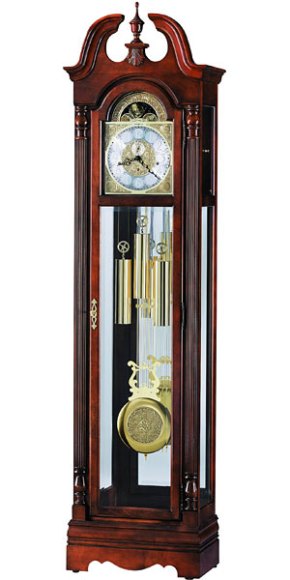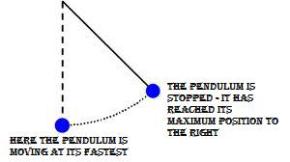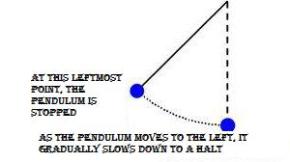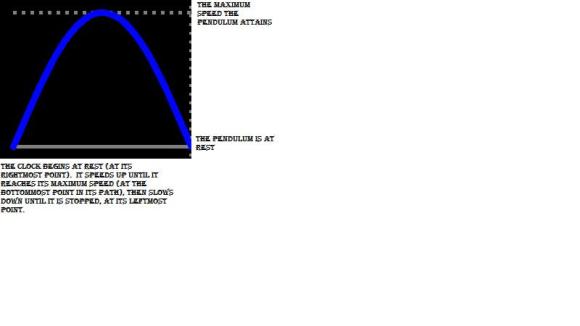What you will get from this Post: I will introduce you, the interested reader, to the primary concepts in the mathematical subject known as “the calculus”; I will show you that, in a fundamental way, the subject makes sense; I will also illustrate how the calculus is useful for studying the real world.
To begin with: I find people tend to have one of two distinct types of reactions to mathematics: either (1) they respond enthusiastically and describe how much they enjoyed the math classes they took in school/university, or (2) slink back in fear. This post is aimed at the second group of people, those who never quite understand the math courses they were required to take in school, who never experienced the satisfying “click” or “lightning bolt” that comes with understanding of a mathematical concept. I hope to give you a basic overview of the set of mathematical concepts and tools known as “the calculus”. After working through this post, you hopefully will have a basic understanding of the history of the “calculus”, the fundamental concepts of the “derivative” and “integral”, and understand why these are useful in the “Real World”. If you want a quick overview of the derivative, and want to skip the section on the integral, I have separated these sections. The derivative is useful for the study of “dynamical systems”, popularly referred to as “chaos theory”, so if you want to read through that section then skip the section on the integral, this will work as well.

Physicist and mathematician Isaac Newton, one of the two discoverers of the calculus. He lived from 1642-1727 CE. from http://utahfeldenkrais.org
The Derivative: Let’s start in a situation you probably find yourself in every day – driving your car home. Imagine yourself sitting at a red light. As the light turns green, you push the pedal to give the engine some gas. The car slowly speeds up – the speedometer goes from 0 miles per hour (MPH), gradually to 10 MPH, and gradually increases until you reach your cruising speed. If you’re on a typical highway in the US, you might gradually speed up until you are cruising along at 50 MPH. When the speedometer reads 50 MPH, what does this mean? It simply means this: if you travel at this speed for one hour, you will have traveled 50 miles. At each instance, therefore, the speedometer tells you the rate at which you are travelling, and the way it measures this – what scientists call the unit of measurement – is by telling you how far you would travel in one hour if you continued to drive at the current speed. The speed, therefore, is only dependent on your car’s current pattern – how quickly or slowly you are travelling at the given instant.
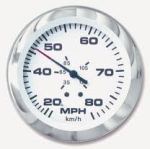
The speedometer tells you the rate of change of your car’s position as it travels on the highway. The “rate of change” of a given quantity – such as the distance your car has traveled – is what mathematicians refer to as the derivative. Image from shopping.com
This is a simple, but very useful, way to describe what mathematicians refer to as the “derivative”, one of two central concepts in calculus. The derivative is simply a measurement of the rate of change of a given quantity at a given instant – in this case the speedometer tells you the rate of change of your car’s position as you travel. If you are sitting still at a traffic light, your car’s position is not changing; its rate of change is zero, and the speedometer registers 0 MPH. If you are travelling at full speed on a highway, the speedometer also gives you the current rate of change of your car’s position – 50 MPH might be a typical reading.
The integral:
The second fundamental concept that occurs in the calculus is the “integral”. To get an idea of what mathematicians mean by “integral”, let’s go back inside the car. Suppose your odometer is broken, but you need to know how far you are travelling in order to find your destination. To do this, you can actually use your speedometer to get an approximate idea of the distance you have traveled If you are driving at a constant speed, this is simple: say you are driving at 50 MPH down a highway, and you drive for 2 hours. How far have you traveled Well, if you are travelling at a speed of 50 miles per hour, then every hour, you drive 50 miles. After 2 hours, therefore, you will have driven 50 + 50 = 100 miles.
Suppose, however, that you aren’t travelling at a constant speed, but you still want to use the speedometer to get an idea of how far you have traveled. You can still do this. Let’s say you drive for two hours, but this time you pull off at an exit halfway through your trip, come to a stop, fill your tank with gas, then return to the highway. Your speedometer will then read something like this: for the first 60 minutes, the speedometer registers your speed at, let’s say, 60 MPH. You gradually come to a stop as you pull off the highway, so your speedometer steadily decreases from 60 MPH to 0 MPH, and for around 10 minutes your car sits still as you fill it with gas – so your speedometer reads 0 MPH. Then, as you start your car and pull back on the highway, your speedometer gradually goes back from 0 MPH to 60 MPH, where it stays for the remainder of your trip – assuming you’re a good driver and do not speed!
Let’s think about how you can still approximate the distance you’ve traveled in these two hours. For the first hour, you are travelling at 60 MPH, so in this time period, you have traveled 60 miles. Over the next ten minutes, you slow down and come to a stop at the gas station, fill up with gas, then head back to the highway. There are several ways to estimate how far you’ve travelled during this time period. We could simply assume that you’ve only traveled a small distance compared to your total trip, since your car is still – travelling at 0 MPH – during this time period. So we could simply say that during these ten minutes you have traveled 0 miles. Let’s use this simple approximation for now.
So according to our calculations above, you traveled for 60 miles during the first hour of your trip, then 0 miles over the next ten minutes (you actually traveled a little bit farther than 0 miles, precisely the distance from the exit to the gas station and back). Over the next 50 minutes (5/6 of an hour), you are again travelling at 60 MPH. So how far will you travel during these 50 minutes? Well, you are travelling at 60 miles per hour, but you travel for 50 minutes, or 5/6 of an hour, so you will travel for 50 miles. Thus, we can estimate or approximate the total distance you have traveled on this trip as 50+60=110 miles. This estimation, let’s keep in mind, is slightly lower than the actual distance you traveled, since you drove for a small distance while slowing down and exiting the highway, but the estimation is good enough for what we need to understand.

You can use information from your car’s speedometer to determine how far you’ve traveled (without using the odometer!). If your car’s speedometer reads 50 MPH (actually in this picture it reads a little less than 50!), this means your car is travelling at a rate of 50 miles per hour. After one hour of driving at this rate, you will have travelled 50 miles. So by using information about the car’s rate of travel, we can determine information about the distance the car has travelled: this is what mathematicians refer to as “integration”.
You may have noticed that in both of the above situations, we were able to use information about your car’s speed – rate of change of position – to approximate the distance you traveled during the given time periods. This is, in simple terms, what mathematicians refer to as “integration” – using information about the rate of change of a given quantity – in this case, your car’s position – to calculate information about the quantity itself. We also got a glimpse of a basic problem that occurs when mathematicians or scientists are studying a real-world problem – in the second situation, we had to use an approximation for the car’s distance traveled, since we chose to ignore the distance the car traveled as it slowed down and sped back up. In fact, an entire branch of mathematics, called “numerical analysis”, is devoted to finding better ways to approximate calculations in situations such as this.
The relationship between the derivative and the integral:
Now, we’ve gotten a basic glimpse at the two basic tools or concepts in calculus, the derivative and the integral. It turns out that these are, in a sense, the opposite, or inverse, of each other. The derivative, as we saw, is a measure of the rate of change of a given quantity at a given instant, such as the car’s rate of change of position, as measured by its speedometer. The integral, on the other hand, uses information about the rate of change of a given quantity to determine information about the quantity itself – recall how we used the car’s speedometer, which measures the rate of change of the car’s position – the calculate the change in position itself.
The “Fundamental Theorem of Calculus” (“FTC”) concisely expresses the fact that the integral and derivative are effectively inverse (or opposite) operations, and is the reason calculus is such a powerful tool for studying many real-world phenomena, such as car travel, rocket launches, weather systems, and so forth. In the examples we saw above, the FTC was implicitly illustrated, since information about the change in the car’s position can be used to determine its rate of travel, and conversely, information about the car’s rate of travel can be used to determine the change in the car’s position.
In a full-blown calculus course, and more advanced mathematics courses in the field known as “real analysis”, these concepts are developed into a rigorous system of mathematics that is both intrinsically interesting and very much applicable to real-world problems. We’ll look at more of these later.
